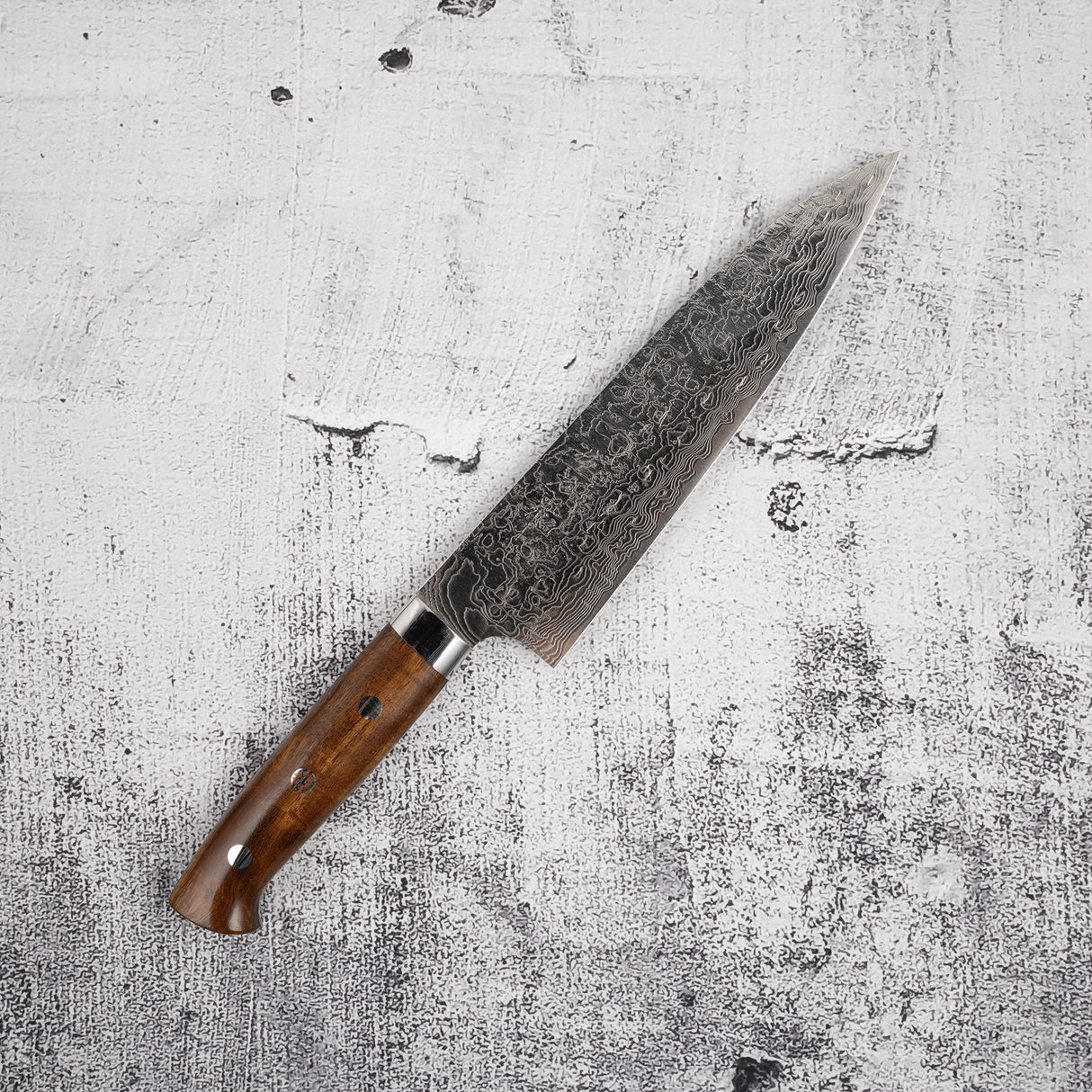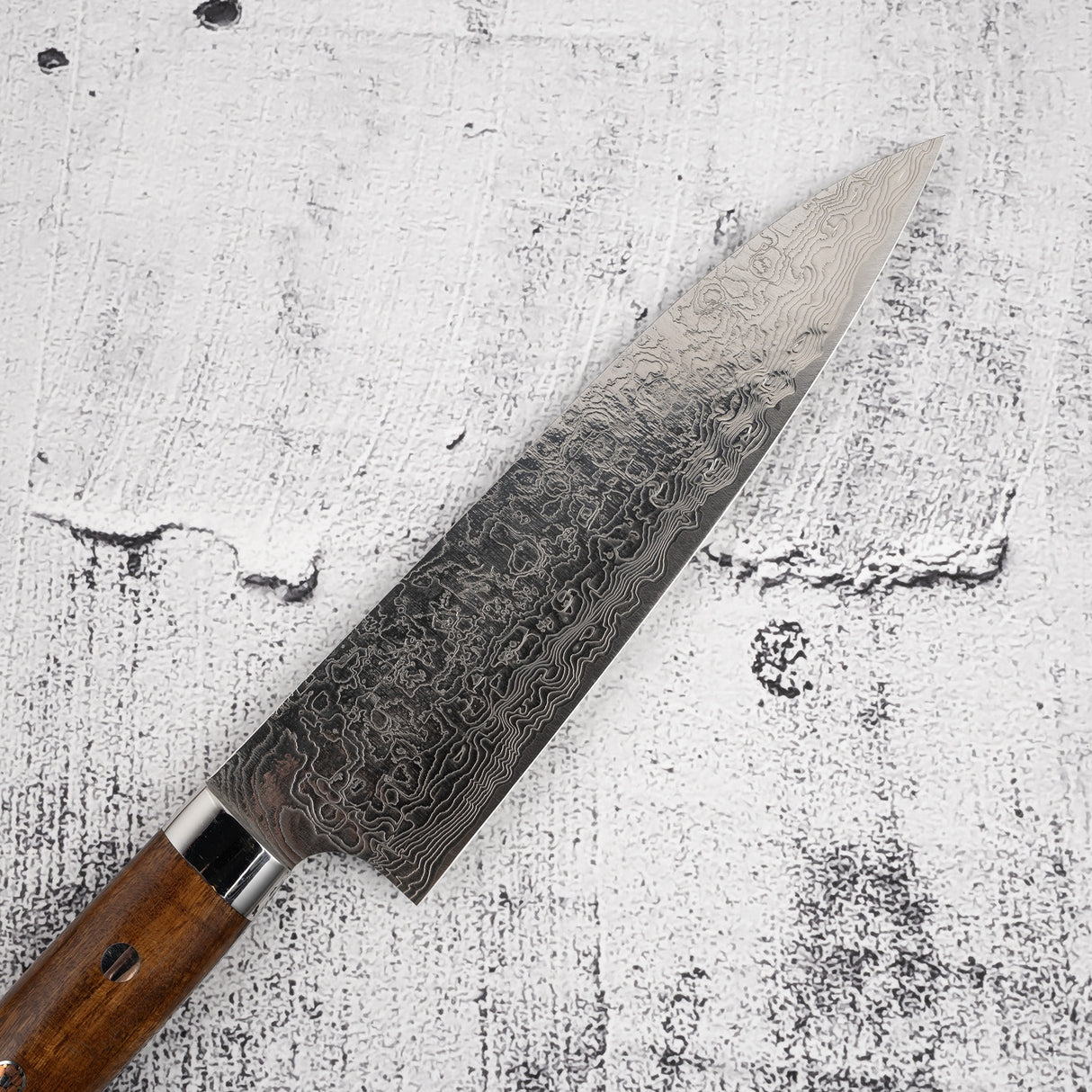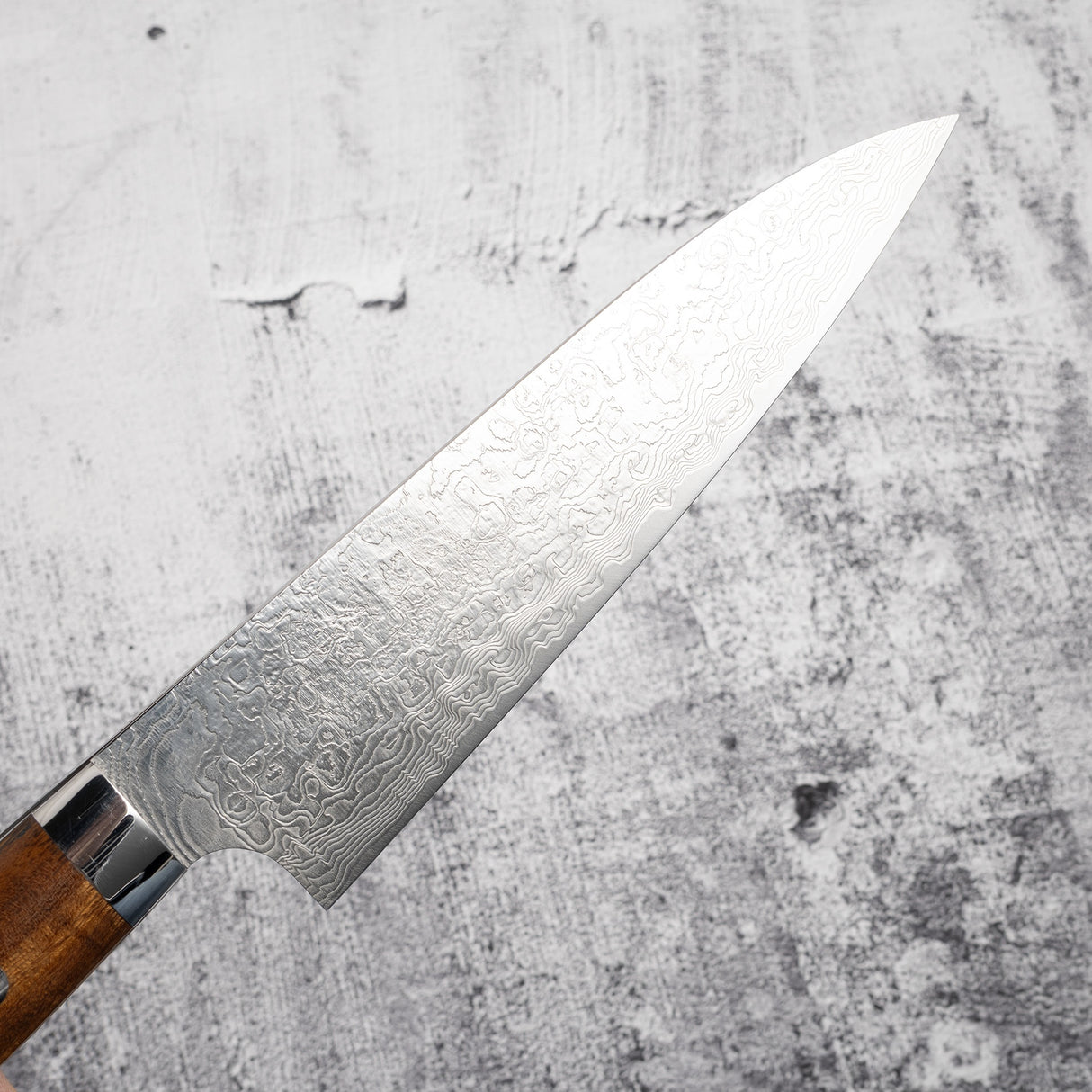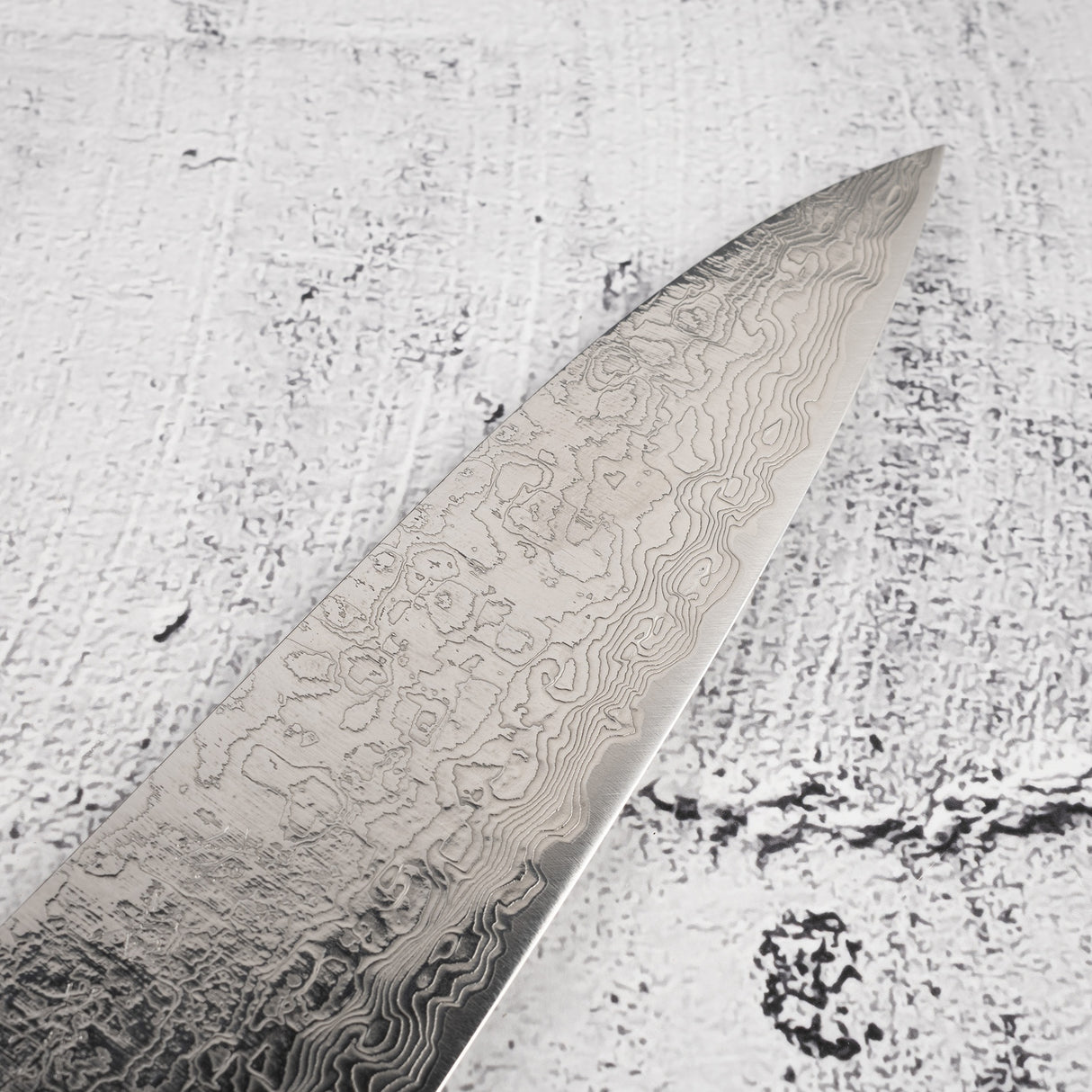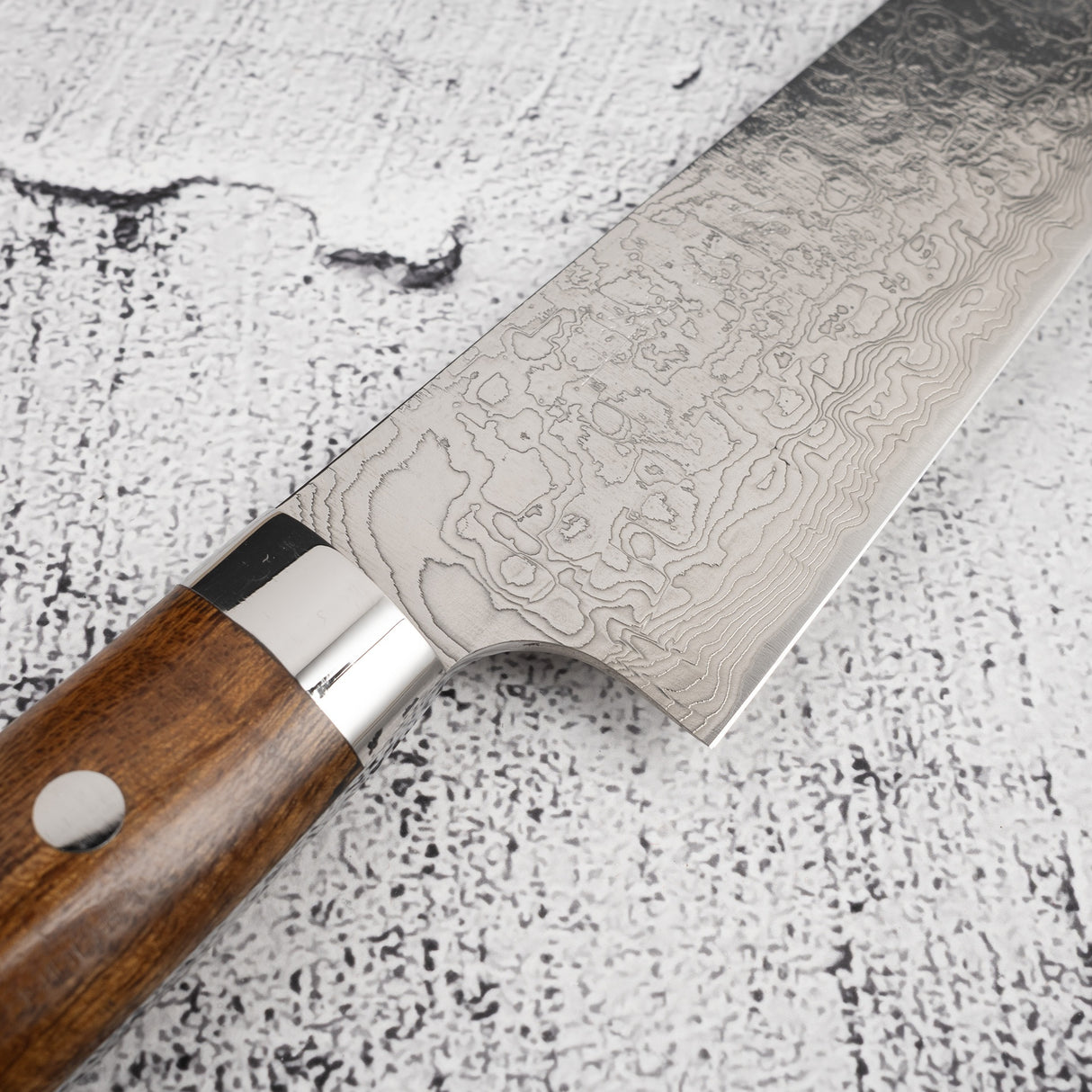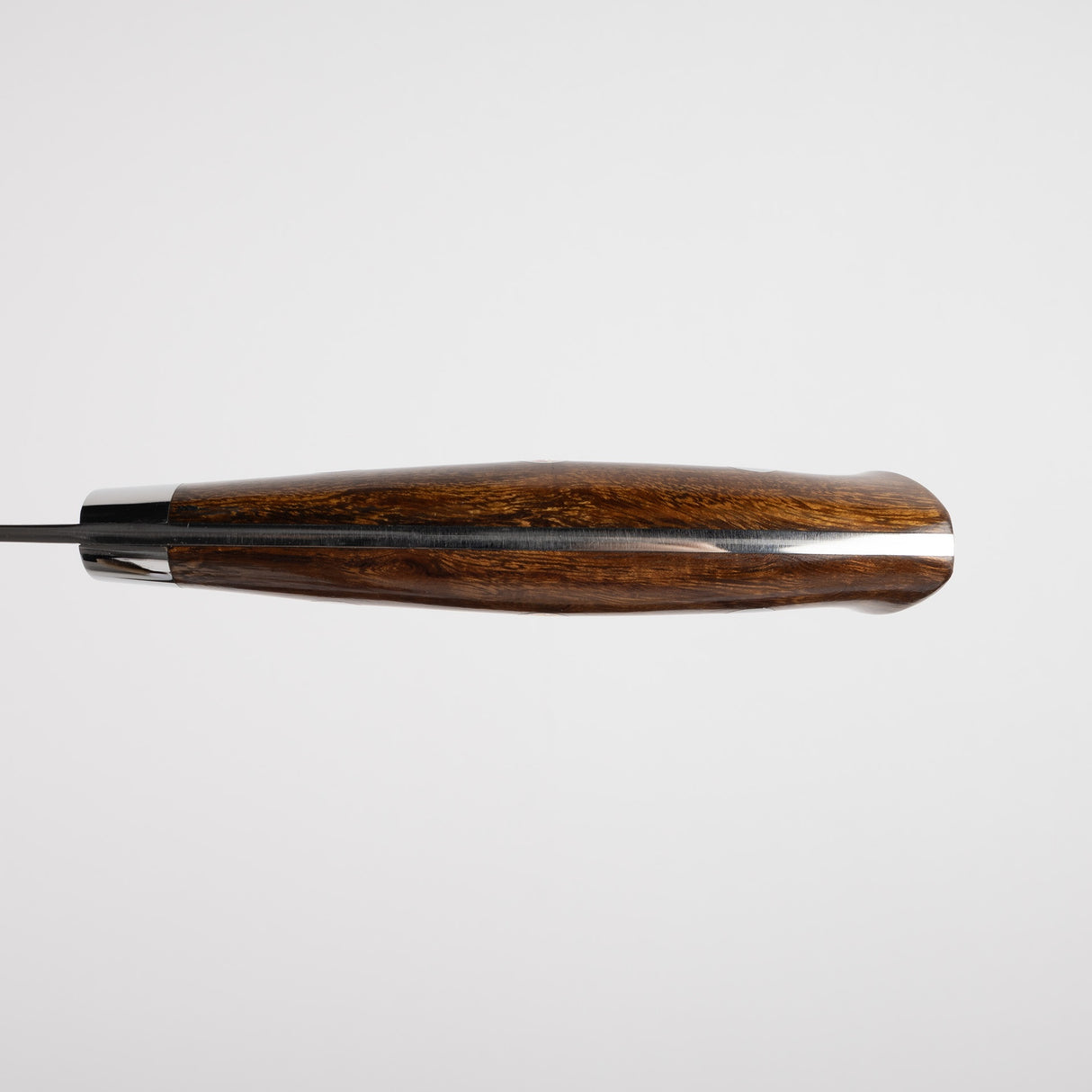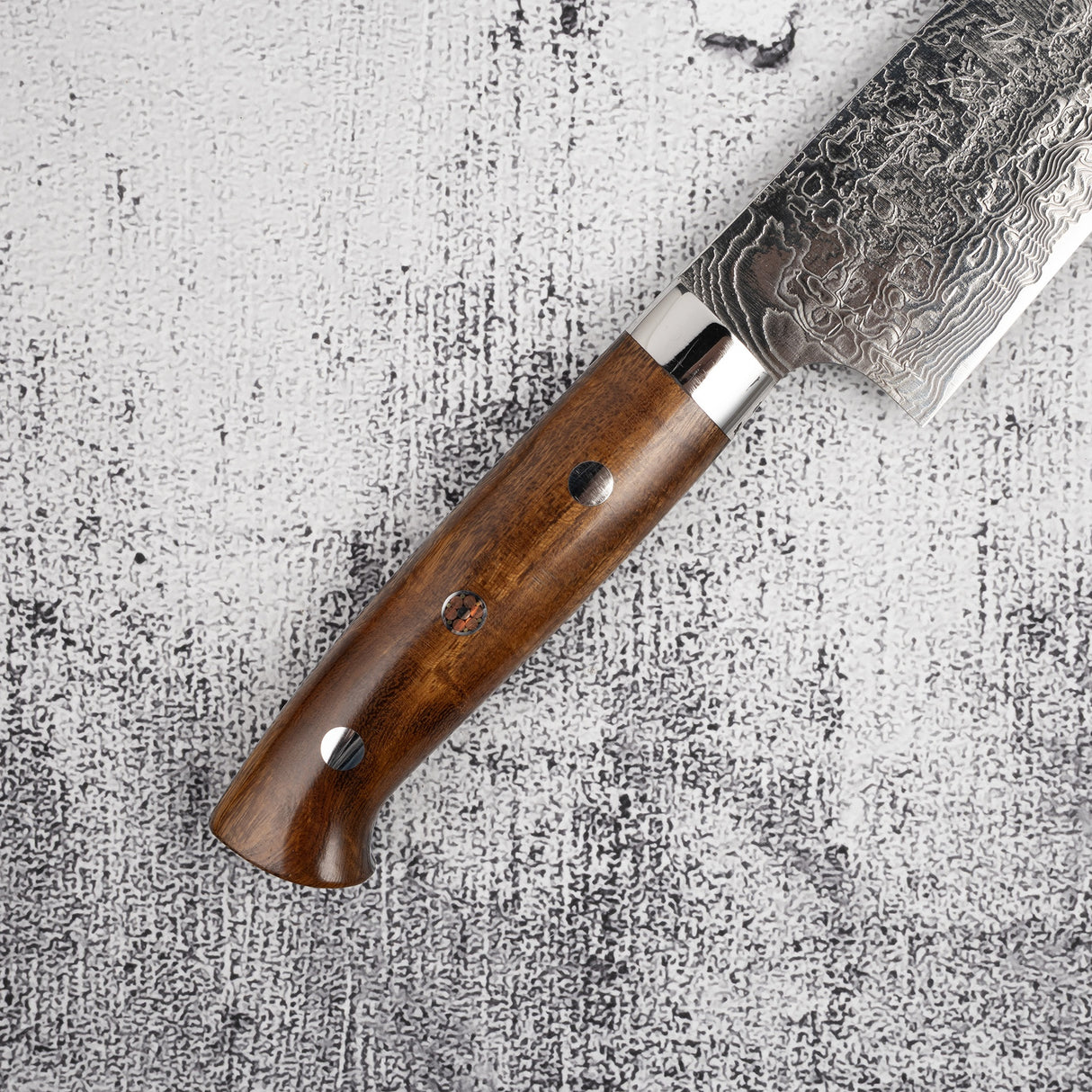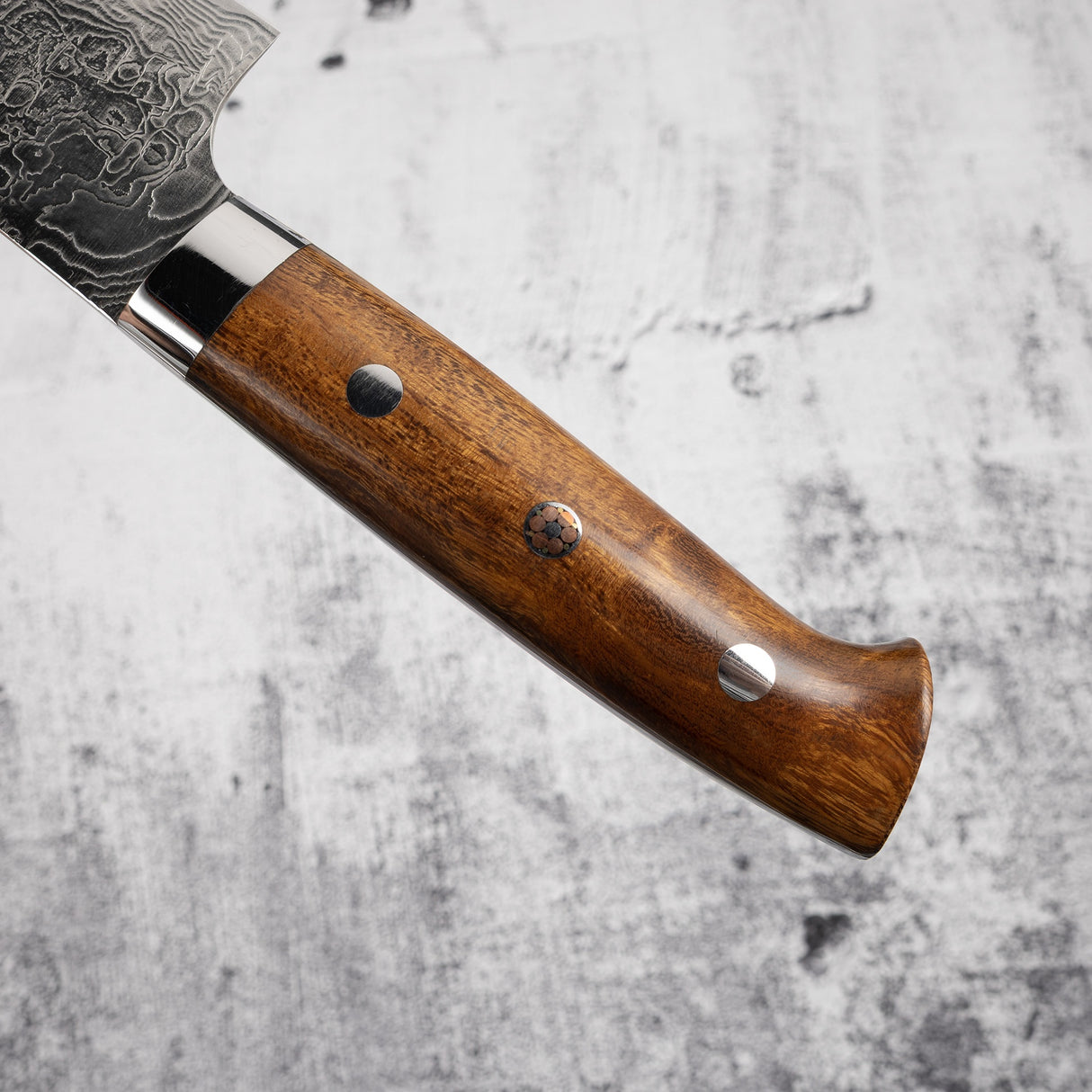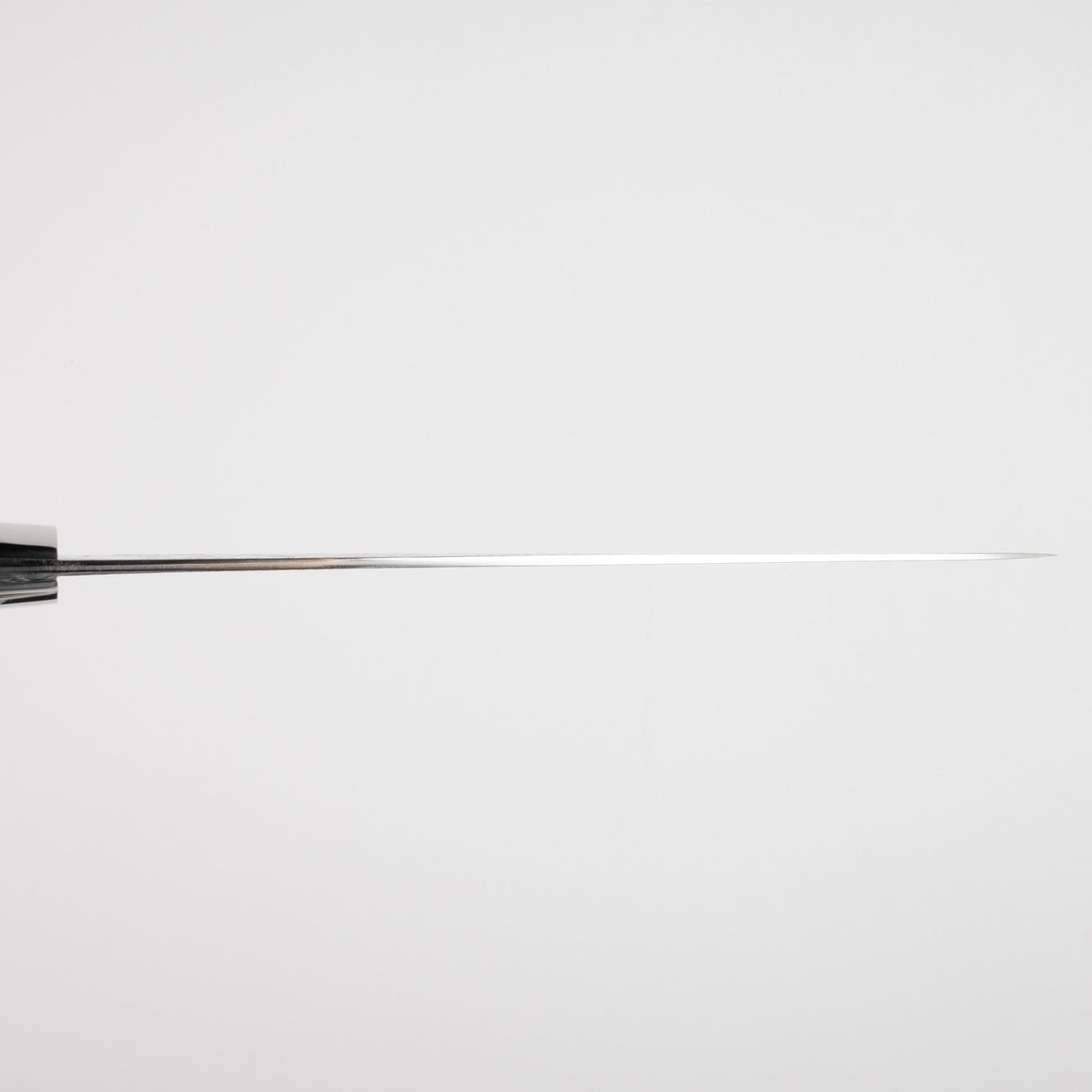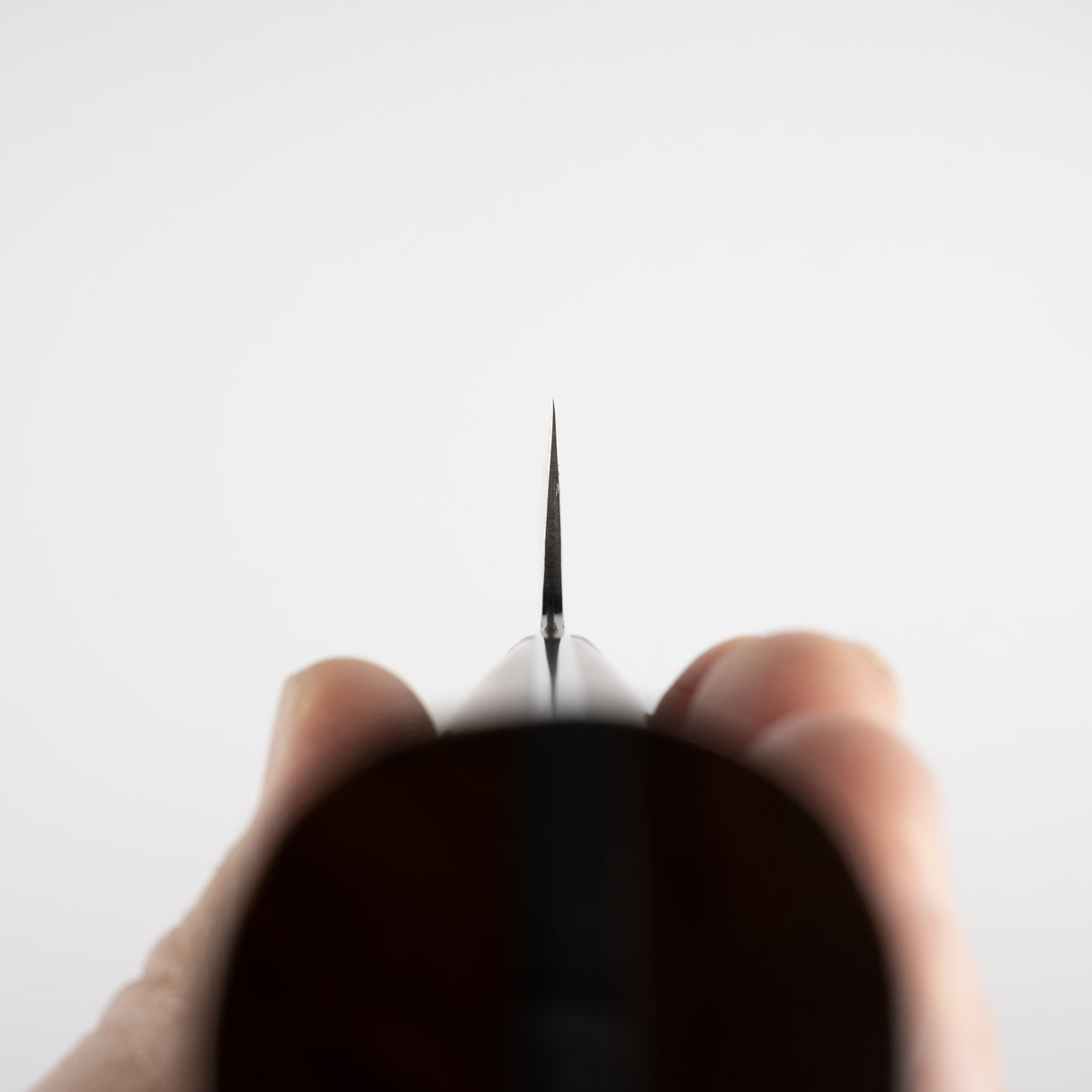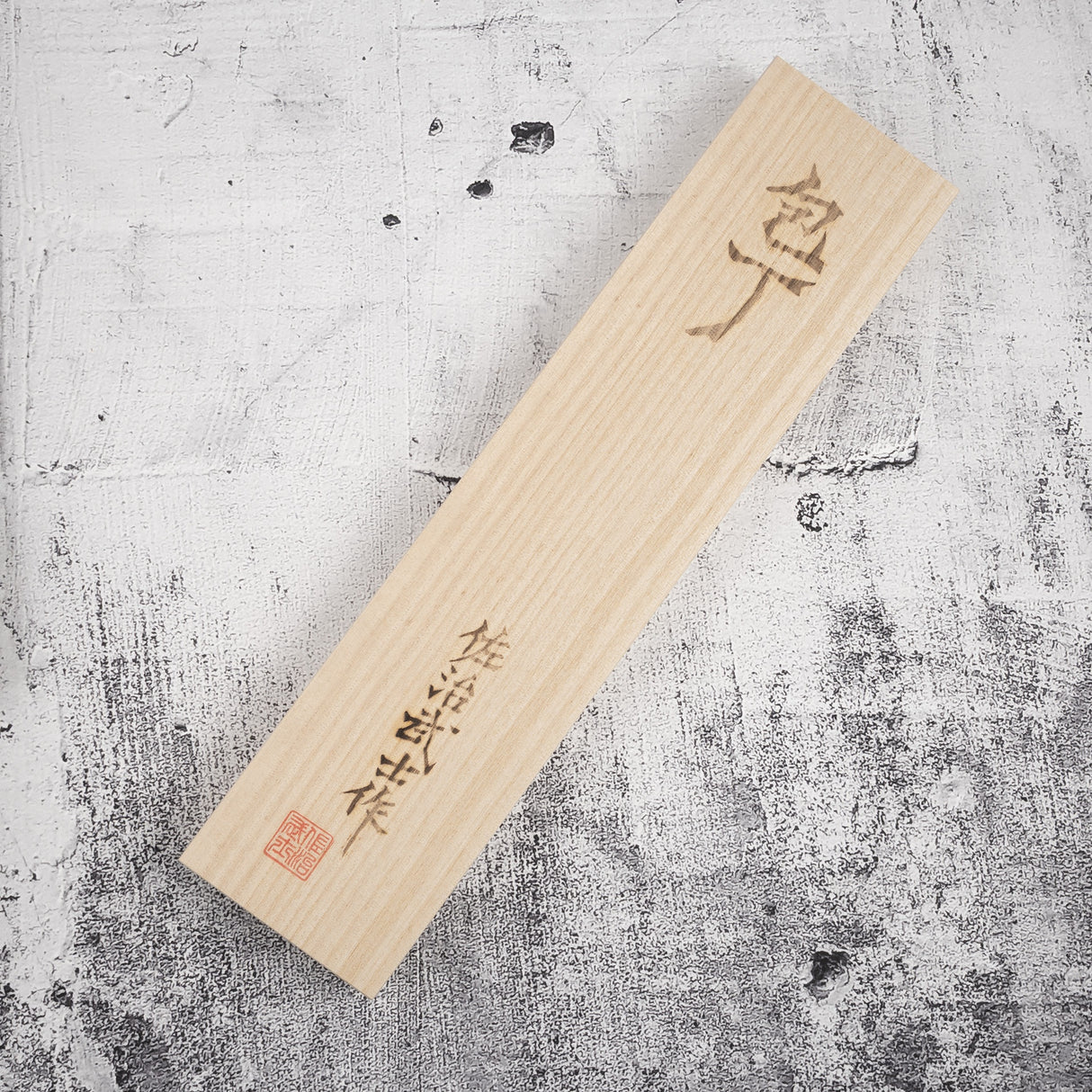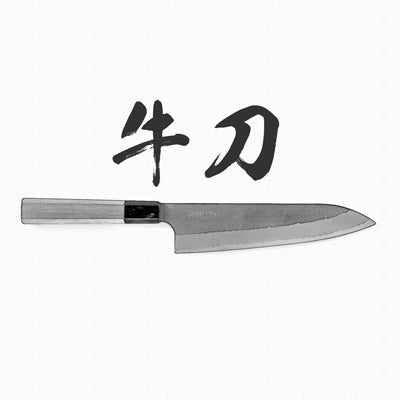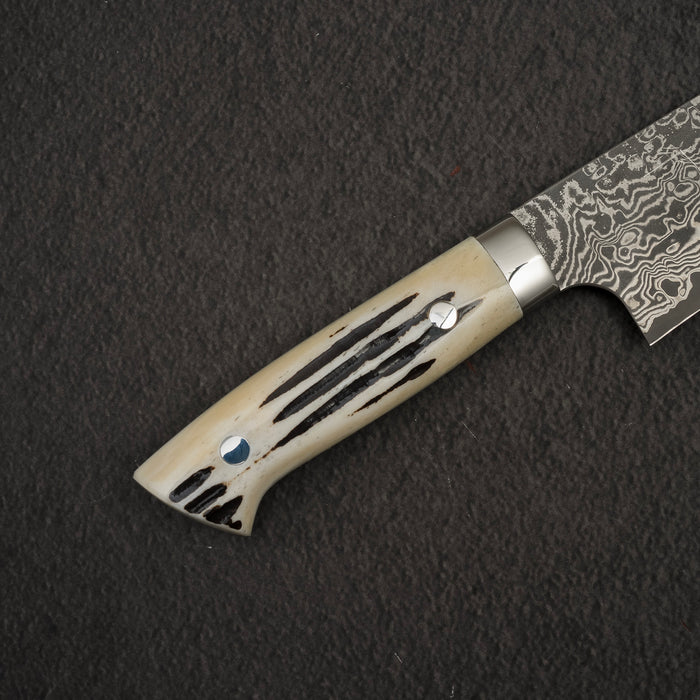Takeshi Saji | 庫存單位:
SJ-SG2DM-GY180IW
Takeshi Saji SG2 鑽石大馬士革牛刀 180 毫米鐵木手柄
正常價格
$13,677.00
單價
/
不可用
Takeshi Saji SG2 鑽石大馬士革牛刀 180 毫米鐵木手柄 已缺貨,一旦有貨就會出貨。
無法載入取貨日期
Detailed Specifications
| Line | 佐治SG2鑽石大馬士革 |
| Profile | 牛刀 / 主廚刀 |
| Bevel Type | 雙斜面 |
| Weight | 208 g | 7.3 oz |
| Edge Length | 177 mm | 6 31/32″ |
| Heel Height | 51 mm | 2 1/64″ |
| Width @ Spine | 2.6 mm | 7/64″ |
| Width @ Mid | 2.0 mm | 5/64″ |
| Width @ 1cm from Tip | 1.1 mm | 3/64″ |
| Steel | SG2 / R2 | Powdered | 不鏽鋼 |
| Blade Construction | 三枚 - 不鏽鋼夾層 |
| Hardness (HRC) | 62 - 64 |
| Surface Finish | 蝕刻 |
| Handle | Saji 西式 |
| Region | 武生 |
| Best for |
|

| Pros | Cons |
|
|
|
Care Instruction
- Don't cut hard things! Japanese knives are brittle so bone hacking is a NO NO!
- Wash with neutral detergent after use, and wipe dry;
- Please don't wash knife with dishwasher, it will damage the wood handle;
- Be careful not to leave the knife close to a heat source for a long time;
- It is a lot more dangerous to cut with a blunt knife than a sharp knife!
- It is best to sharpen a Japanese knife regularly on a waterstone. Error: Steel nature unknown

